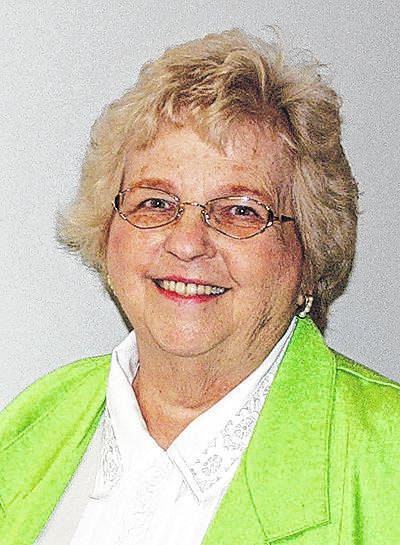
Memorial Day has been commemorated for many years all around the country.
Services are similar in various parts of Greene County and today let’s take a look at how the services were conducted in 1920, 100 years ago. At that time Memorial Day was celebrated on the 31st day of May. A Few years ago, the date was changed to the fourth Monday in order to allow working folks an extra day for the weekend.
A program from 1920 indicates a memorial sermon was delivered by the Rev. Bennett at the First Methodist Church on Sunday morning May 30. The veterans and their families were to attend en masse. They were to gather at the Post Hall in the Court House and leave at 10 a.m. in order to attend the service and of course, the public was invited as well. In the afternoon, graves of the veterans at Woodland Cemetery were to be decorated by the sons and daughters of various veterans organization.
On the traditional Memorial Day, May 31, services were held in various locations throughout the county, sponsored by the Grand Army of the Republic, veterans and the Women’s Relief Corps, which was the auxiliary for the GAR.
In Beavercreek, the morning services were held at the Beavercreek Cemetery. Those in charge were GAR Comrades O. Whitson, J. Tate, H. H. Conklin, D. M. Doggett and John Davis. This group was to leave the Post Hall at the Court House at 8 a.m. Lincoln’s Gettysburg Address was then, as now, an important portion of the program. This year it was given by Mrs. Edward Ellsbury. On the way to the cemetery, a halt was made at Trebein to stew flowers over the Little Miami River in memory of the naval heroes. This portion of the day was under the direction of the Louis Relief Corps Number 29 unit of the GAR.
Those who were to attend the services at Stevenson Cemetery also gathered as the Post Hall at 8 a.m. with Comrades I. T. Cummins, Albert Burrell and D. F. Baker in charge. At this location the Gettysburg Address was delivered by Paul H. Cresswell. President William S. Scarborough of Wilberforce University was the speaker for the morning service with music under the direction of professor Simpson.
At the Catholic Cemetery, Comrades J. H. McPherson, W. I. Smith, Levi Rader, C. H. Littler, John Andres and others were to leave the Post Hall at 8:30 a.m. At this particular site, the Gettysburg Address was given by Father Burke and the ritualistic work of the Grand Army was given. Members of the church provided decorations for the veteran’s graves and music was provided by the children of St. Brigid Catholic Church.
At the Mercer Cemetery in Spring Valley, Comrades Pennington, Wilson and Matthews conducted the services in the morning.
Of course, one of the more important sites to celebrate Memorial Day was the Ohio Soldiers and Sailors Home. At this location, services were held at 8:30 a.m. on the school grounds. All soldiers and sailors (past and present) were invited to attend. The speaker that year was the Department Commander H. C. Martindale.
Initially, the holiday was set aside to honor those who lost their lives in the Civil War, but as other wars came, the day was set aside to honor all those who had served.
By 1 p.m., all the units who had performed their duties in the various cemeteries in the county were to assemble at the corner of Collier and Main streets in Xenia for the parade which would be the start of the afternoon events.
The police department led the parade followed by grand marshal L. S. Barnes. Next came Erskine Winters, chief of staff with his aides Ankeney Burrell, Elton Evans, Tom Mason, and Leslie Moore
The OSSO home band and battalion were the next, followed by the Department Commander Martindale, riding in the home carriage.
W. F. Funk, the afternoon speaker, rode in a car with his aides Charles Hawkins, Millard Burrell, Andres Hutchison, and William Harner.
The veterans were led by Lewis Post 347 (GAR) followed by the Spanish-American veterans and the World War I veterans. The sons of the Civil War had their own organization. They were followed by the Boy Scouts and a host of school children.
Members of the GAR and the WRC as well as the Daughters of Veterans came in cars, followed by the civic societies and then other citizens were invited to participate with their carriages or cars as desired.
The last unit of the parade was the fire department.
The parade went through the city to Woodland Cemetery. The exercises then were held at the section of the cemetery dedicated to the the GAR.
Music by a male chorus was followed by the ritual of the GAR and a memorial to the Unknown Dead. Henrietta Evers recited the Gettysburg Address after appropriate music had been provided by the chorus. Two addresses followed; one by Funk, the other by Martindale. The ceremony ended with the band playing while the audience sang “America.” Following the service, all those who had marched proceeded in the order they arrived back to the Court House where they disbanded.
Ten years later in 1930, the Civil War veterans were still around, but not as active. The program was much the same, but the American Legion members had taken charge.
Please pause often for a few minutes to remember the sacrifices all veterans and their families have made for the benefit of our country.


